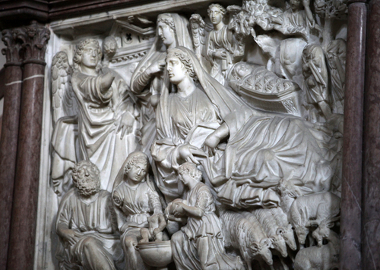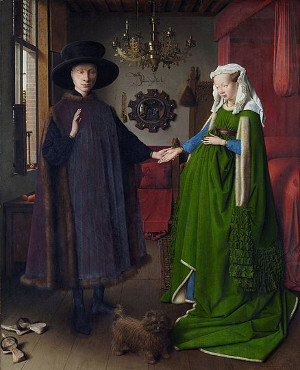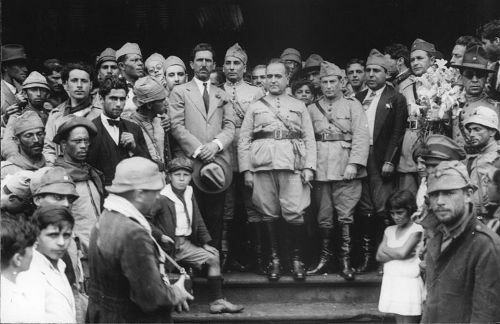THE gothic art, or the Gothic style, emerged in the north of what is now France, in the 12th century, and initially spread as an architectural style to various locations in Europe until the 15th century. Gothic art is considered an expression of the triumph of the Catholic Church during the Middle Ages, as it was a remarkably religious artistic expression.
The Gothic style was opposed to the Romanesque architectural style, previously in vogue in medieval buildings, mainly in monasteries and basilicas. These constructions were characterized by round arches and angled vaults (consisting of the penetration of two vaults) made in massive structures with few spans.
In the Gothic style, the structures of the buildings are lighter, formed by wider spans, whose objective is to achieve a greater luminosity inside buildings, aided by the use of delicately crafted windows and stained glass in the shape of rosettes.

Madonna in a church, by Jan van Eyck (1390-1441). It is possible to see on the screen the internal characteristics of Gothic buildings
The naves of the cathedrals, the main exponents of Gothic architecture, were built in an ogival shape, an action made possible by technical advances in the construction of supporting arches. These arches in the shape of warheads, needles and capitals, added to the use of flying buttresses, allowed the buildings to be taller, with more vertical architectural forms, indicating a direction to the sky, which also characterized its perspective religious.
The walls and columns were thinner and lighter, with ribs that reinforced them. The entrance to the cathedrals has three portals, as opposed to a single portal present in Romanesque buildings. The grandeur of the buildings also gives the impression of the smallness of man in face of the sumptuousness of the buildings.
The Gothic name was possibly coined by Giorgio Vasari (1511-1574), one of the Renaissance exponents, who considered it a monstrous and barbaric artistic style. Gothic possibly derives from the Goths, the barbarian people who invaded the Roman Empire during its decadence. This pejorative perspective given to Gothic art would only be overcome in the 18th century, when a new form from looking at Gothic art began to be developed in England, later radiating to other countries.

Pulpit carved by Nicola Pisano in the Baptistery of the city of Pisa
But the Gothic style was not limited to architecture. In sculptural representations there were also changes, characterized mainly with the intention of giving life to human figures through the expression of feelings. Placed on the porticoes of the cathedrals, the Gothic sculptures seem to move and look at the others, still carrying symbols that allowed the identification of biblical characters, for example. One of the prominent names in Gothic sculpture was Nicola Pisano.
In the painting, it is worth highlighting the illuminations made in religious manuscripts, where once again the intention to portray human feelings was expressed. In Gothic painting, the name of Giotto di Bondone (1267-1337) stood out, despite the Italian painter representing a transition to the Renaissance, developing new concepts and working methods, seeking realism each time bigger. He intended to transpose to his frescoes and murals the goals and conceptions developed by Gothic sculptors, creating an illusion of depth on a flat surface.

Madonna enthroned with saints and virtues, by Giotto di Bondone (1267-1337)
Another outstanding painter was the Dutchman Jan Van Eyck (1390-1441) who intended to record aspects of urban life and the spring. bourgeois society of his time, seeking to work also with the notion of perspective and with the representation of details in their construction.
Gothic art followed the period of urban and commercial renaissance in Europe, spreading with the economic power of the nascent bourgeoisie on the continent. It was not only cathedrals that were crafted by architects, sculptors and painters, but also secular, non-religious buildings. One example was the construction of the Doge's Palace, which began in 1309 in Venice, at the height of the economic power of the Italian port city. From the end of the 15th century onwards, Gothic was gradually surpassed by the artistic style developed with the Renaissance.

Screen the Arnolfini couple, by Jan van Eyck (1390-1441)
By Tales Pinto
Master in History



